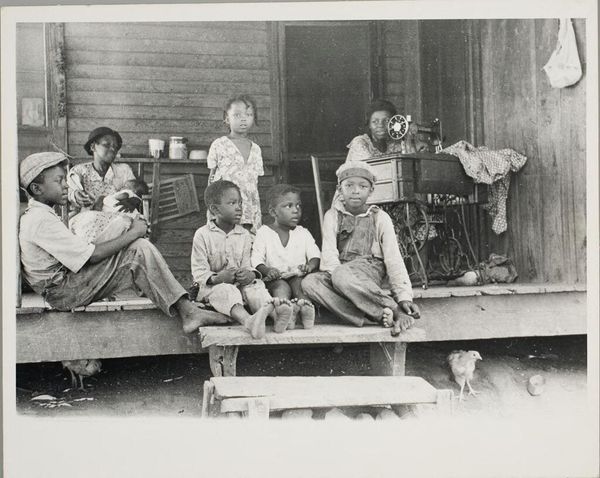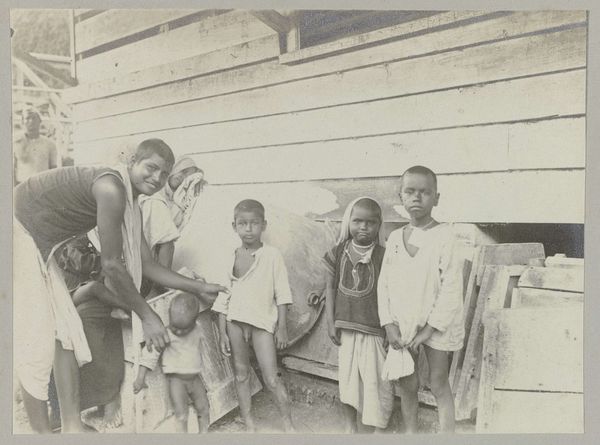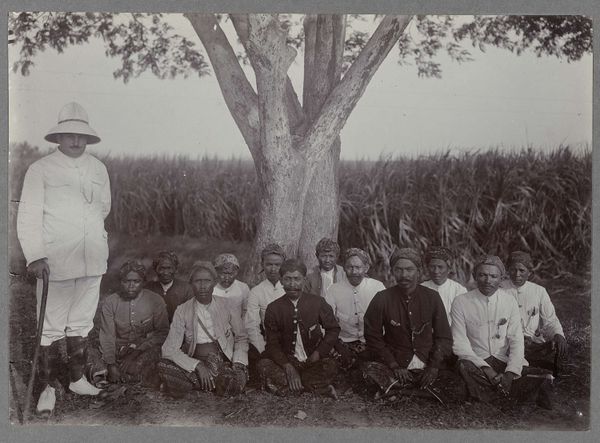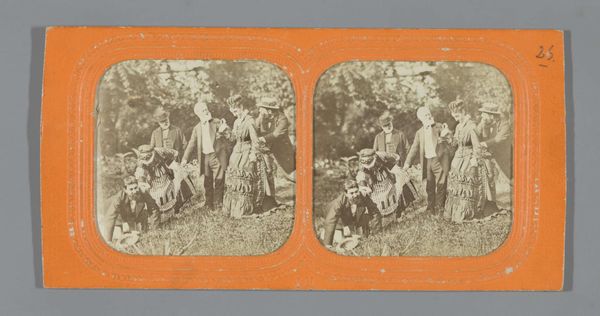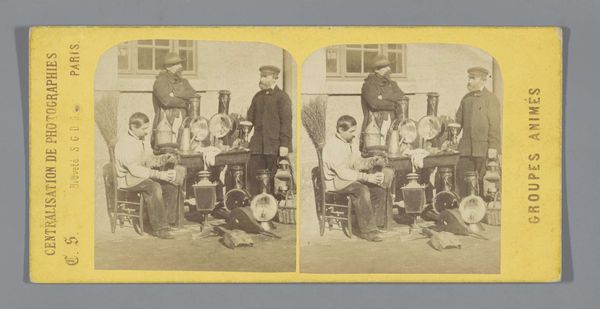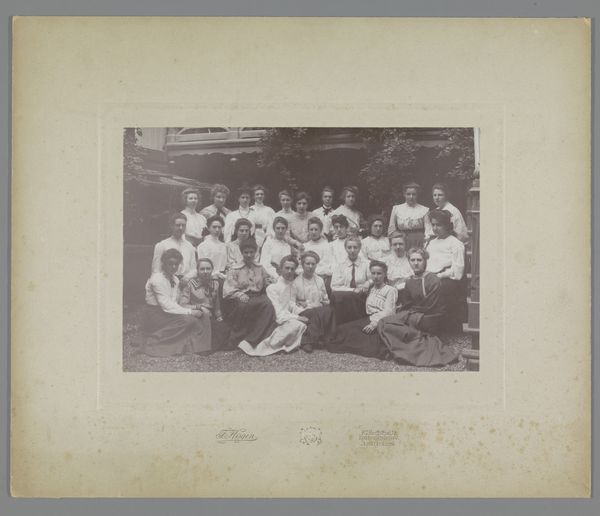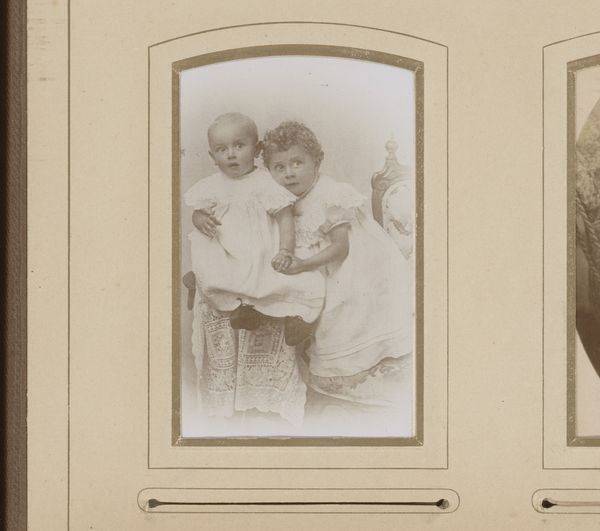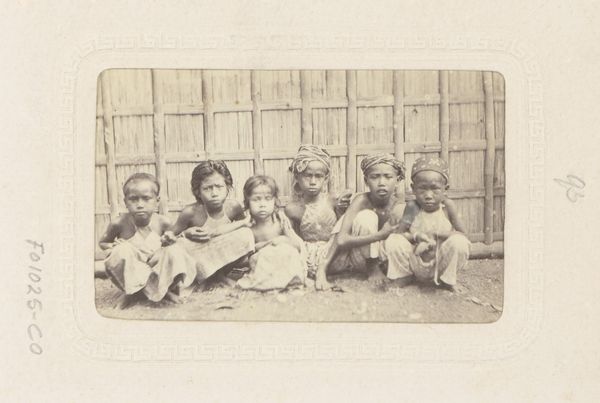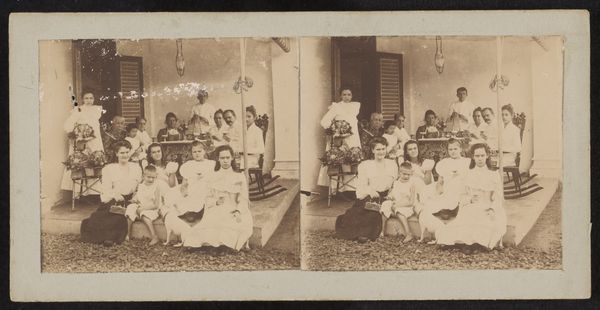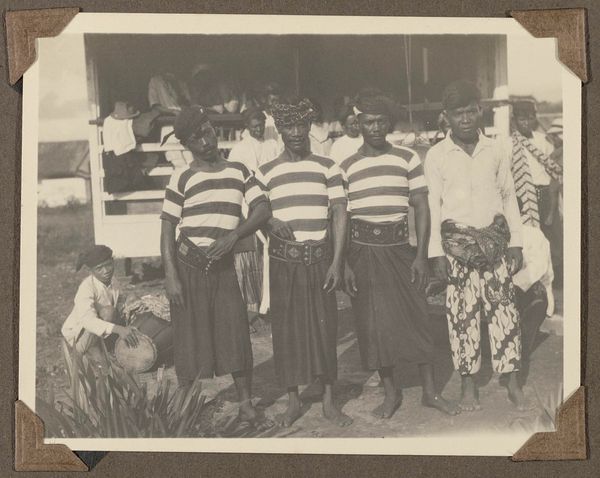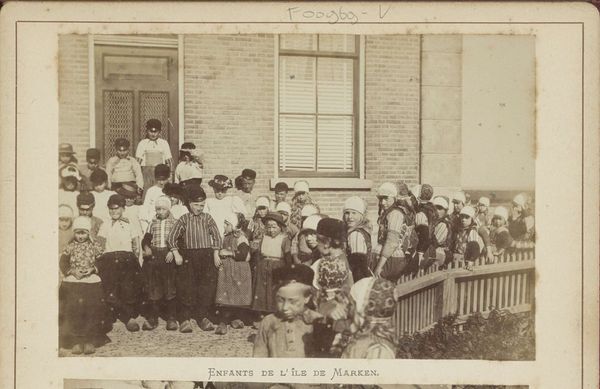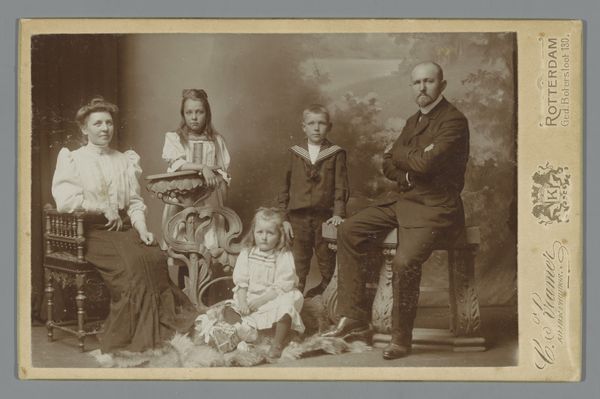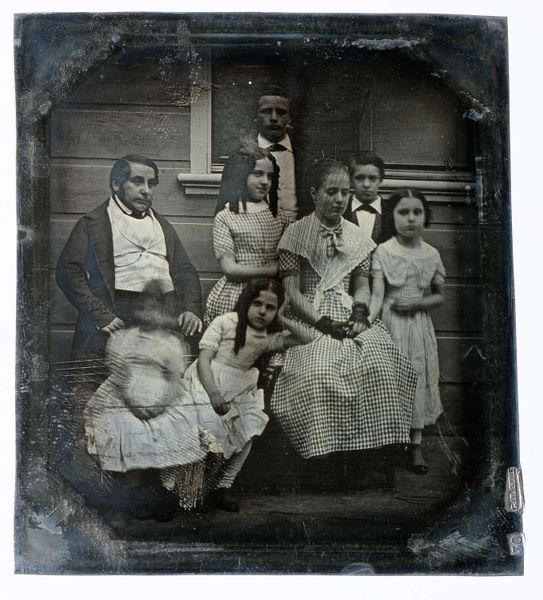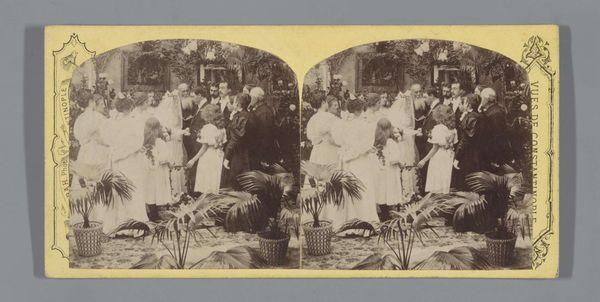
photography, gelatin-silver-print
#
photography
#
coloured pencil
#
group-portraits
#
orientalism
#
gelatin-silver-print
#
genre-painting
#
academic-art
Dimensions: height 89 mm, width 177 mm
Copyright: Rijks Museum: Open Domain
Editor: Here we have a gelatin-silver print entitled "Schoolklas met onderwijzer in Manokwari, Indonesië," dating from around 1900 to 1902. It presents a classroom scene with a teacher and a group of students. There's something both intimate and unsettling about this image. What can you tell me about the history behind its creation and reception? Curator: It's important to view this photograph through the lens of its historical context: Dutch colonialism. These images were often circulated as a form of visual propaganda, reinforcing the colonial power dynamic and the idea of bringing "civilization" to the "uncivilized". The positioning of the teacher, the arrangement of the children, and even the classroom setting itself, contribute to this narrative. Notice how it resembles western school classrooms? What effect does it have on you to know the origins? Editor: It certainly shifts my perspective. I initially focused on the faces of the children, but now I'm also thinking about the photographer's intentions and the intended audience for the photo in the Netherlands. It feels like this image actively participates in the colonial project. Curator: Precisely. Photographs like these were used to garner public support for colonial ventures, shaping perceptions of both the colonizers and the colonized. And think about how these children would be displayed – often on the walls in households for admiration. What does the visual language suggest about power? How does this differ from how the picture affects you personally? Editor: The rigid composition, the formal attire of the teacher juxtaposed with the children's clothing... it speaks volumes about imposed social structures. Knowing the intent behind it makes me reflect on how images can perpetuate harmful ideologies and how crucial it is to question what they depict. Curator: Exactly. By understanding the historical and political context, we can move beyond a purely aesthetic appreciation and critically engage with the photograph's complex layers of meaning. This helps us become conscious viewers. Editor: Thank you; that really changes how I will consider historical images moving forward.
Comments
No comments
Be the first to comment and join the conversation on the ultimate creative platform.
